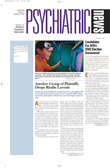The men who were young during the Vietnam War are now in their 40s and 50s. One visualizes them, both veterans and nonveterans, as seasoned by desk jobs or steady work, very possibly married and responsible for families. The war era and the turbulent 1960s, with the widespread use of illicit drugs, is now long behind them. Or is it?
The answer is both yes and no, according to a study reported in the July American Journal of Public Health. It was conducted by Rumi Price, Ph.D., a research associate professor of epidemiology and psychiatry at Washington University School of Medicine in St. Louis, and his colleagues.
Price and his coworkers focused on 839 men who were a fairly good cross-sample of American men who had been around age 22 during the Vietnam War era. The 839 subjects included 323 men who had served in the Vietnam War until 1972 and who had used illicit drugs during that period; 319 men who had served in the war until 1972 and who had not used illicit drugs during that period; and 197 controls—men who had not served in the war, but who were matched with the other subjects on age, education, draft eligibility, and some other factors. (Illicit-drug use among Veterans was identified via urine tests that were administered at the time they left Vietnam.)
Price and his coworkers then surveyed all three groups of subjects during 1996-97 to learn what their illicit-drug use, if any, had been between 1972 and 1996-97. They found that illicit-drug use by all three groups had generally declined during those years.
For instance, 45 percent of the men who had used illicit drugs while serving in the war reported having used cocaine at least five times since 1972, 14 percent of the veterans who had not used illicit drugs during the war reported the same, and 13 percent of the controls reported the same. But by 1996-97, the use of cocaine reported by all three groups combined was only 9 percent. Similarly, 72 percent of the men who had used illicit drugs while serving in the war reported using marijuana at least five times since 1972, 37 percent of the veterans who had not used illicit drugs during the war reported the same, and 26 percent of the controls reported the same. But by 1996-97, the use of marijuana reported by all three groups combined was only 18 percent.
These figures, of course, also reveal that illicit-drug use among men who were young during the Vietnam War era had not disappeared altogether by 1996-97. And so do some other 1996-97 findings from the study: In addition to the 18 percent of all the study subjects who were using marijuana and the 9 percent who were using cocaine, 9 percent were using opiates, 6 percent were using sedatives, and 5 percent were using stimulants. These results suggest that such drug users could have used some help in quitting drugs.
What’s more, a number of subjects appeared to have been using illicit drugs for a long time because, when drug-usage results from all subjects were pooled, average duration of drug use was nine years for sedatives, 10 years for stimulants, 11 years for opiates and cocaine, and 14 years for marijuana.
Another reason to believe that such users might have profited from drug treatment comes from another of the researchers’ 1996-97 results: Of the men who tried to kick their habits, 67 percent did not manage to quit stimulant use, and 52 percent did not manage to halt their marijuana use.
How could such men have been helped in 1996-97 or today, in the event that they are still using illicit drugs? The answer is not simple, Price and his coworkers concluded. The reason is that most of their subjects who attempted to kick drugs said they did not seek help from drug treatment programs. Thus the challenge is how to reach and help such persons.
The study, “Remission From Drug Abuse Over a 25-Year Period: Patterns of Remission and Treatment Use,” can be accessed on the Web at www.ajph.org by searching on “Price.” ▪
